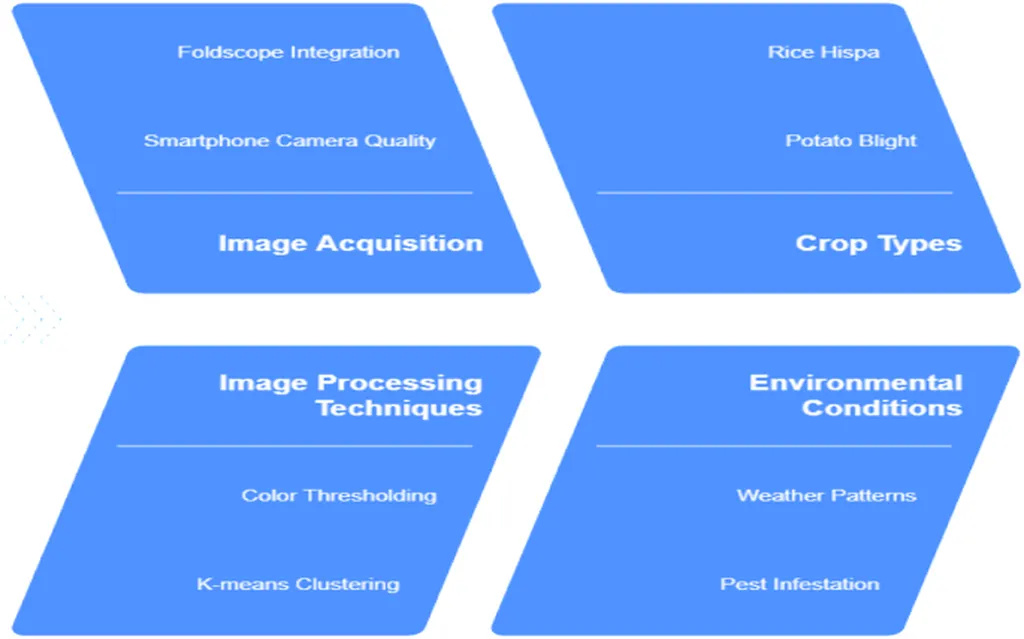In the ever-evolving landscape of precision agriculture, a groundbreaking study has emerged, promising to revolutionize the way farmers monitor and manage crop diseases. Researchers have developed an IoT-integrated Convolutional Neural Network (CNN) framework that automates the detection and quantification of diseases in rice and potato crops. This innovation, published in *Scientific Reports*, could significantly reduce yield loss and minimize pesticide overuse, offering a beacon of hope for sustainable farming practices.
The study, led by Gaurav Verma from the Department of Electrical and Electronics Engineering at Shri Ramswaroop Memorial University, introduces a custom-curated dataset comprising over 1,800 images captured through smartphone cameras and foldscope devices under natural lighting conditions. The proposed CNN model achieved an impressive classification accuracy of over 95%, with a disease quantification accuracy of 90.5%. This level of precision is a game-changer for the agriculture sector, where timely and accurate disease detection can mean the difference between a bountiful harvest and significant crop loss.
“Our framework not only identifies diseases with high accuracy but also quantifies the severity of infection, enabling farmers to take targeted actions,” Verma explained. The model’s ability to analyze infection percentages ranging from 0.68% in early-stage cases to 13.98% in severely affected samples provides a nuanced understanding of crop health, facilitating better decision-making.
The framework includes a MATLAB-based graphical user interface (GUI) for real-time visualization of classification results and severity scores, making it user-friendly and accessible for farmers. The model’s training convergence, demonstrated with a mini-batch loss reduction from 1.0879 to 0.0094 over 200 iterations, ensures robust performance. Additionally, the model’s synthesis for hardware deployment using FPGA showcases its resource-efficient performance in IoT environments, with less than 5% LUT and 1% register usage for 512×512 images.
The commercial implications of this research are vast. By enabling early and accurate disease detection, farmers can reduce the overuse of pesticides, leading to cost savings and environmental benefits. The framework’s scalability and field-deployable nature make it a practical tool for crop health monitoring, enhancing sustainable farming practices. As the agriculture sector continues to embrace technology, this IoT-integrated CNN framework could pave the way for smarter, more efficient farming practices.
This research not only addresses immediate needs in the agriculture sector but also sets the stage for future developments. The integration of IoT and deep learning in precision agriculture is still in its nascent stages, and this study serves as a testament to the potential of these technologies. As more farmers adopt such tools, the agriculture sector could witness a paradigm shift towards data-driven, sustainable practices.
In the words of Verma, “This work introduces a scalable, field-deployable tool for crop health monitoring, with potential to enhance sustainable farming practices through timely disease management.” The future of agriculture looks promising, with technology playing a pivotal role in ensuring food security and sustainability.

